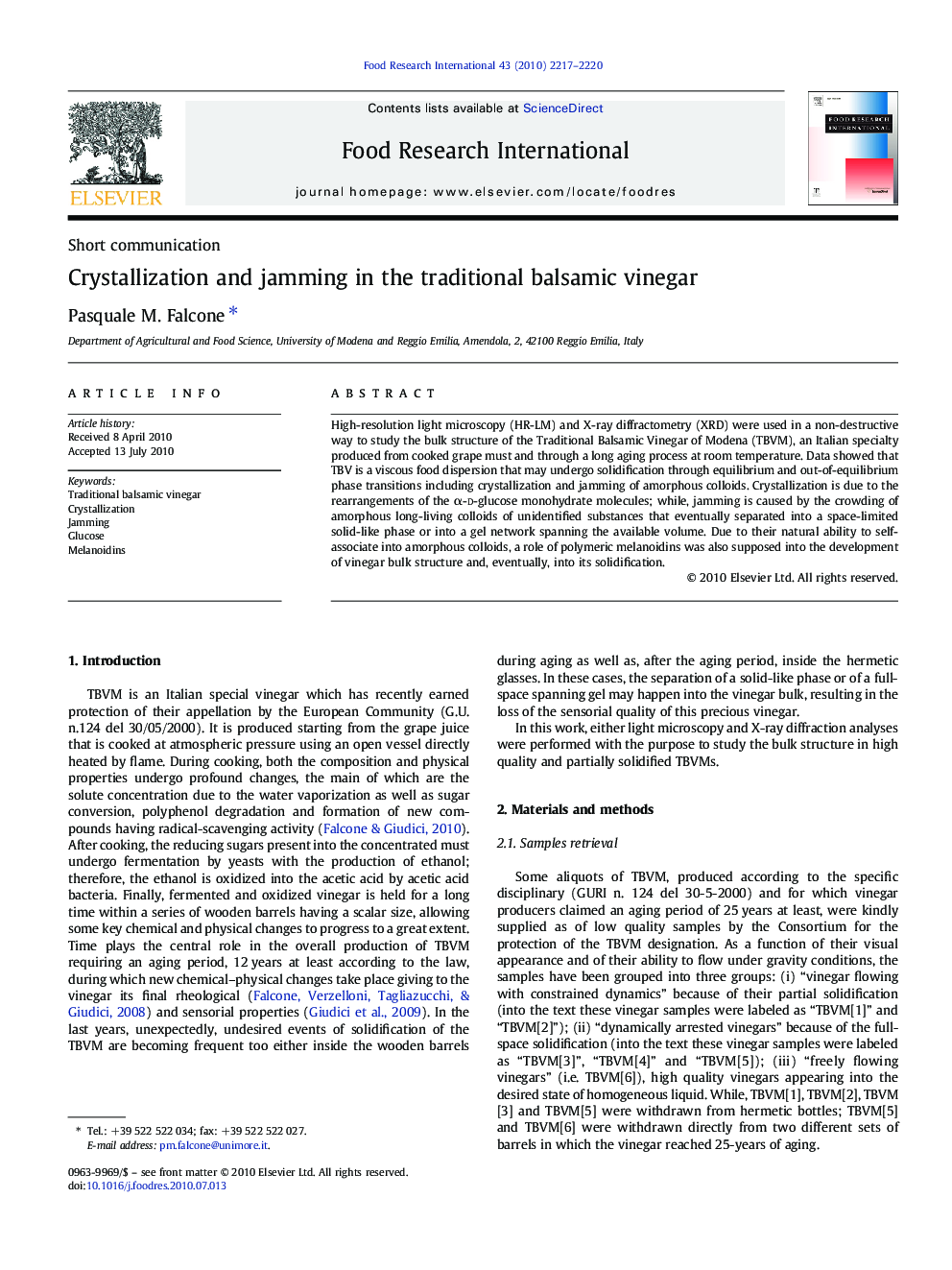| Article ID | Journal | Published Year | Pages | File Type |
|---|---|---|---|---|
| 4562495 | Food Research International | 2010 | 4 Pages |
Abstract
High-resolution light microscopy (HR-LM) and X-ray diffractometry (XRD) were used in a non-destructive way to study the bulk structure of the Traditional Balsamic Vinegar of Modena (TBVM), an Italian specialty produced from cooked grape must and through a long aging process at room temperature. Data showed that TBV is a viscous food dispersion that may undergo solidification through equilibrium and out-of-equilibrium phase transitions including crystallization and jamming of amorphous colloids. Crystallization is due to the rearrangements of the α-d-glucose monohydrate molecules; while, jamming is caused by the crowding of amorphous long-living colloids of unidentified substances that eventually separated into a space-limited solid-like phase or into a gel network spanning the available volume. Due to their natural ability to self-associate into amorphous colloids, a role of polymeric melanoidins was also supposed into the development of vinegar bulk structure and, eventually, into its solidification.
Related Topics
Life Sciences
Agricultural and Biological Sciences
Food Science
Authors
Pasquale M. Falcone,
